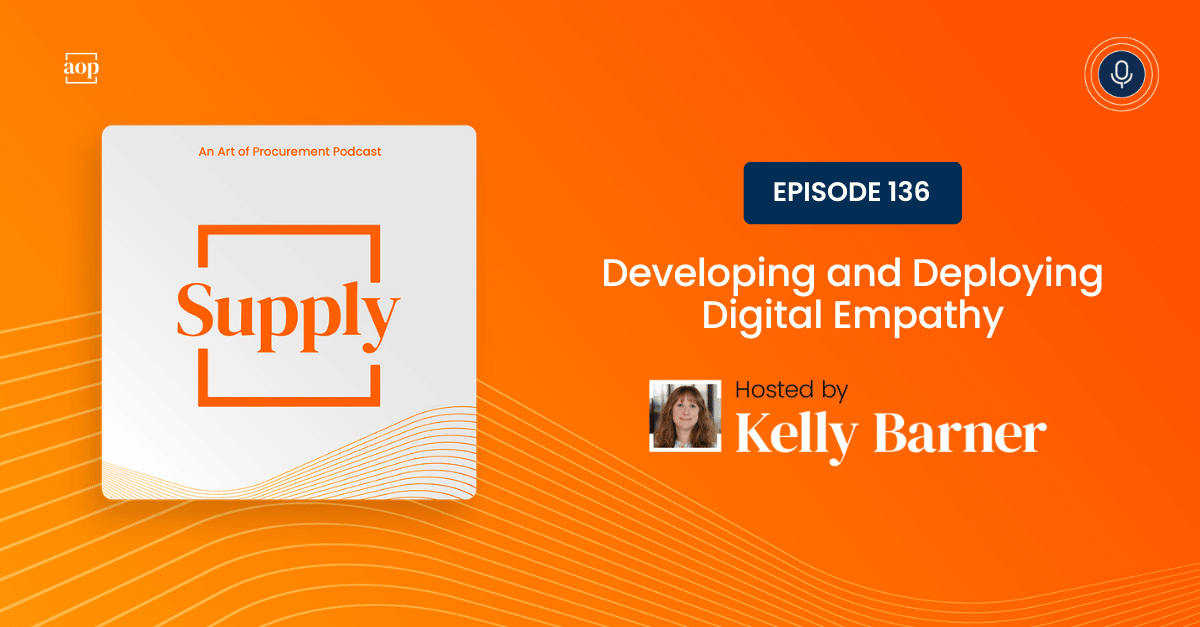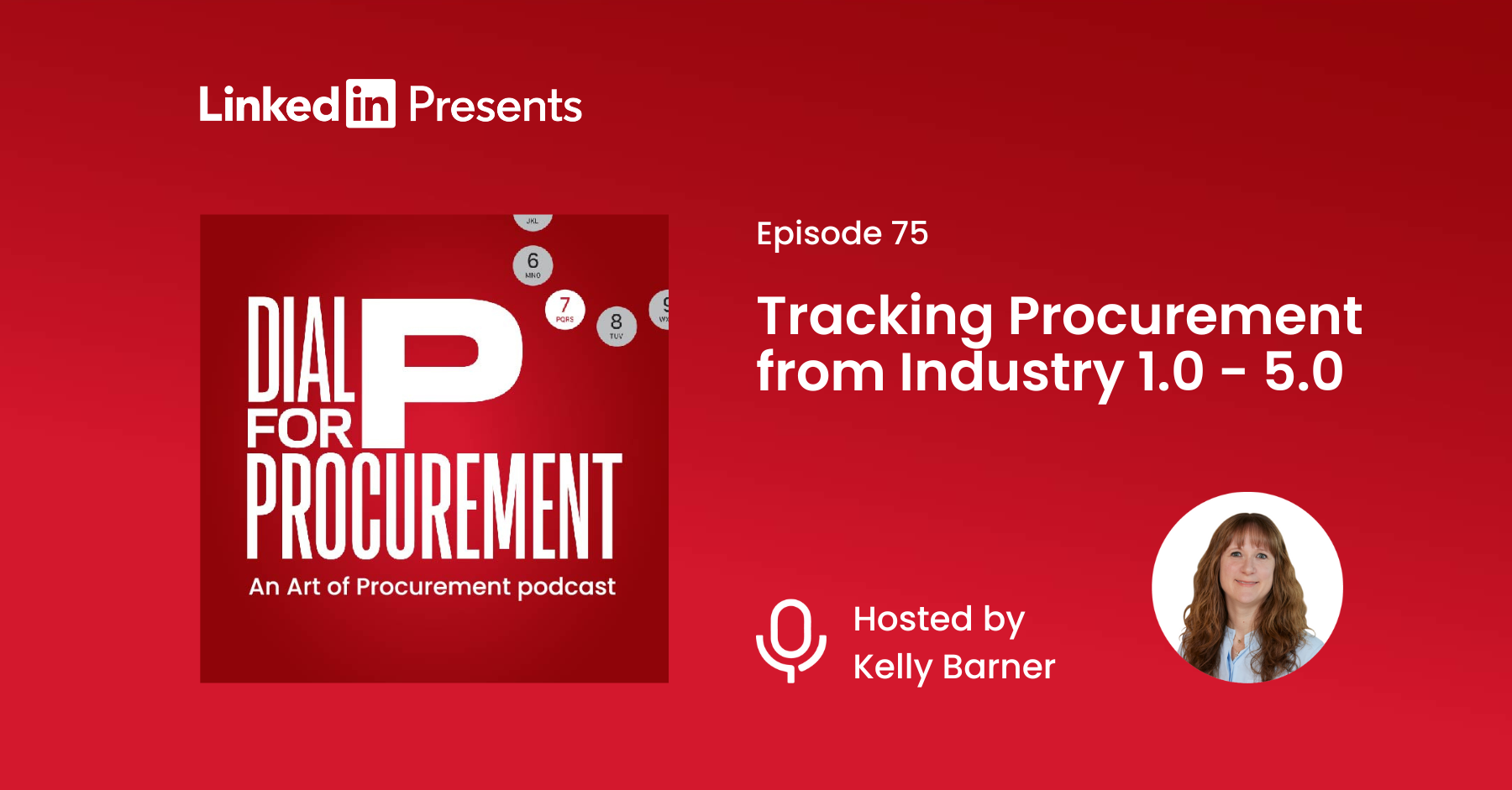
I pre-interview about a dozen people each month for all of the podcasts produced by Art of Procurement. One thing I have noticed across all of those conversations: the more hype we are subjected to about AI and automation, the more procurement professionals want to talk about relationships and communication.
Gone are the days of cold, penny-pinching procurement professionals from the past. Most leaders are now highly empathetic, and they understand how that ultimately makes it possible for them to drive desired business outcomes.
But even that may not be enough. In today’s high tech world, they may need to practice digital empathy as well.
Feeling what Others Feel – Digitally
I always forget the difference between empathy and sympathy. Sympathy is polite. It says, ‘I’m sorry for your loss,’ or ‘I’m sorry to hear that you are going through that,’ or ‘I’m happy for you.’ At the same time, it is distant. Sympathy is experienced from a third person point of view.
Empathy is a shared experience, even when that experience only directly affects the other person. Empathy feels your pain, shares in your joy, walks a mile in your shoes, and feels an echo of the same feelings you are having. If you find yourself in a situation where someone’s happiness, sadness, or even anxiety is contagious, that’s empathy.
How is empathy different in the context of digital innovation and even disruption? Is it possible that empathy could succeed where budgets have failed?
I found an interesting article in Forbes that tackles the idea of digital empathy head on.
“Empathy is the ability to understand and share the feelings of another. Digital empathy is the ability to humanize customer behaviors, preferences, and aspirations through the connection between human-centered data, insights, and the meaningful customer engagement powered by those insights.”
I think the key word in that quote is humanize.
As decision-makers’ data gets broader, driven in large part by what cutting edge analytics can handle, many of the nuances are lost. Analysis may tell us that the answer to a question about user experience is 7 clicks, or 15 minutes, or darker colors, but why? If we can’t figure out why, the answers don’t matter.
First we have to remember to ask why, and then we have to try to answer that question by walking a mile in our customers’ shoes. In fact, a Salesforce datapoint included in that Forbes article tells us that 88 percent of customers say the experience a company provides is as important as its products and services. This completely aligns with the journey procurement has been on. If the value associated with a supplier could be fully captured by specifications, requirements, and prices, we wouldn’t bother with supplier relationship management.
So while most of us are pushing to increase the size of our data sets, the quality of that data, and the power of the analytics we use, we may still be missing a key element: the human element.
Factoring in the Human Element
Part of what makes the idea of digital empathy so interesting is that we’re seeing the effects of dehumanization in consumer companies, in some cases before consumers have consciously realized it themselves.
A few weeks ago I shared my thoughts in a Procurement 6, Art of Procurement’s Friday podcast, about what Starbucks’ new CEO has learned about customer experience and digital experience.
Brian Niccol, who was formerly the CEO of Chipotle, is spending his first 100 days at Starbucks touring store locations and support centers and meeting with the company’s suppliers.
In an AP article published in mid-September, Niccol shared his early assessment of why Starbucks’ sales have fallen this year. Unsurprisingly, it comes down to customer experience. CNN also covered the story in a July article titled, “Starbucks sales tumble as customers reject high-priced coffee.”
Starbucks’ global same-store sales are down 3 percent year over year. In North America, sales are down 2 percent, but the total number of transactions in North America was down 6 percent over the same time period. Their sales figures are being buffered by higher prices.
Sure, some of this is the effects of inflation, which has left consumers with less disposable income, but we have to acknowledge that what they are paying for has changed as well.
75 percent of Starbucks orders now come in through mobile, delivery, and the drive through. While very convenient, all of these channels add distance between customers and Starbucks’ famous in-store experience, as well as the baristas the company invests so much in.
Here’s why I think this is interesting: Starbucks’ sales are down because… customers are being given what they want: faster, easier ways to place orders. Customers are prioritizing digital ordering channels, but they are left wanting something more.
Without being ‘forced’ to accept the Starbucks’ vibe while waiting in line, that coffee grabbed at the drive through or at a ready-to-go counter is exactly the same as any other to-go coffee shop. In that competitive landscape, Starbucks seems exorbitantly expensive by comparison.
Getting what you want doesn’t always create the need to come back.
Digital Empathy and the Internal Customer Experience
Procurement and supply chain teams are trying to put the user experience first. We are providing better digital tools and putting more control directly into users’ hands just like Starbucks did. While it seems like we are responding to what they want, we’re leaving them with very little to remember us by. We’re giving them what they want without giving them what they need.
Starbucks’ planned response to this dilemma is to redesign their stores. They want to make it possible for everyone to place digital orders while still receiving a bit of Starbucks’ coffeehouse charm.
If we apply the observation about customer preferences versus customer experience to the digital, corporate world, the need for digital empathy comes into sharp focus.
As the Forbes article I referenced earlier points out, “Digital empathy builds on the ‘golden rule’ we’ve come to learn in life. But rather than treating others the way you want to be treated, digital empathy asks you to treat others the way they want to be treated. This is why having a 360-degree view of the customer is paramount. You have to understand them to know their feelings and meet or even exceed their expectations.”
As we have seen at Starbucks, we may need to recognize their feelings before they do.
Early in my career I was part of a team that had to translate business requirements into a product roadmap. What was the number one thing I learned from that role? Don’t give people what they ask for. Give them what they need. Many times, people will ask for a solution to a symptom. Fix it, and you’ve only made them halfway happy.
But if you dig, and find out why they are asking for something, you can get to the core of the issue and fix that instead. In that scenario, their need is just as likely to be emotional as operational.




